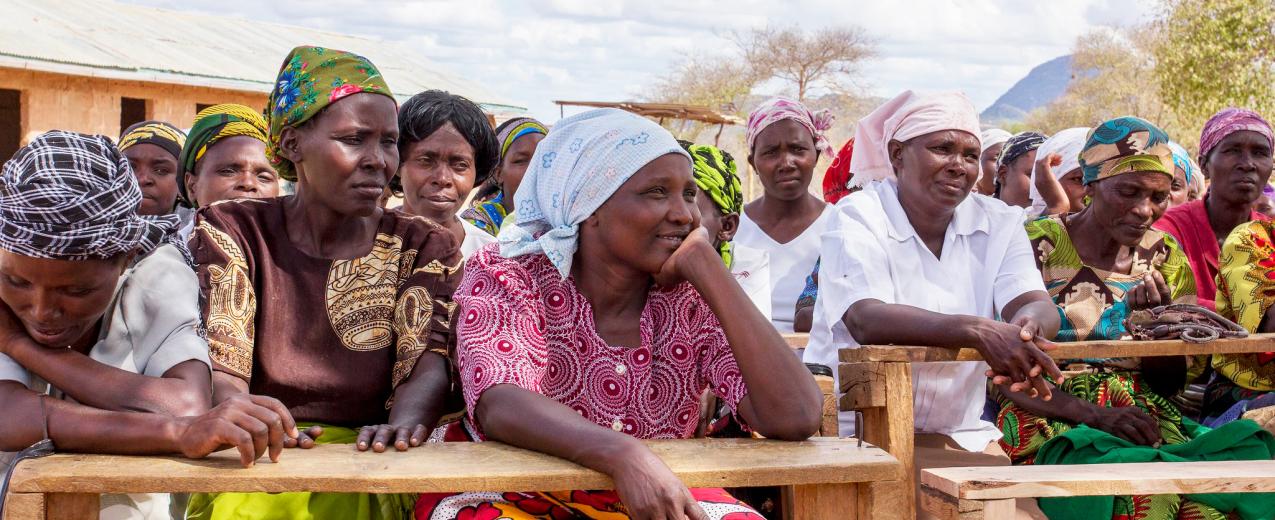
Monitoring and evaluating the impact of norm change initiatives
The two most widely evaluated approaches to promoting gender equitable norms are:
- Edutainment and multi-media campaigns
- Non-formal education, including short courses aiming to shift norms and community dialogue processes
Below we showcase some tools used to monitor and evaluate shifts in norms using these approaches.
Tools for measuring changes through edutainment
| Initiative | Norms-related evaluation questions |
|---|---|
| UNESCO radio series on GBV: A new dawn in Quialana (Mexico) |
Perceived community acceptance of gender-based violence (GBV) (norm): “Do you think that that the community, the neighbours, and other families see violence against women as a serious problem here in Quialana?” with responses coded from 1 (“No, they do not see it as a problem at all”) to 4 (“They see it as a serious problem that needs to change”). The evaluation also probed personal beliefs about and responses to GBV, expectations about the future, and respondents’ intentions to bring up their children with gender-equitable values. |
| Change Starts at Home radio show plus community intervention, Nepal |
The evaluation asked about changes in attitudes, norms and intended behaviour towards GBV. Norms questions: The endline survey asks respondents how many people in the community agree with the following statements (0 = No-one in my community believes this, 1 = Some people in my community believe this, 2 = Most people in my community believe this, 3 = Everyone in my community believes this):
|
| Taru, Radio Soap Opera, India | The evaluation asked respondents’ views on son preference, sex-selective abortion, and whose opinions mattered most to respondents on family planning decisions (spouse, family elders, friends), as well as asking many other questions on gender norm and equality issues. |
| UNICEF Saleema – multi-component initiative to reduce FGM, including media campaign |
The evaluation probes various building blocks of change in relation to FGM/C: respondent’s self-efficacy, expectations about the effects of abandoning FGM/C, intended future behaviour, and perception of descriptive and injunctive norms around the practice. Descriptive norms: Perceived prevalence of FGM/C practice Injunctive norms: Perceived acceptability of FGM/C practice The survey also asks about identification with the Saleema brand, access to media, exposure to messages and recall of messages. |
Tools for monitoring change through non-formal education processes
| Initiative | Norms-related evaluation questions |
|---|---|
| Responsible, Engaged and Loving (REAL) Fathers Initiative, Uganda | The evaluation asks respondents to think about the people whose opinions about their behaviour as a father and as a partner matter most to them, and whether most, half, some or none of them would think that the behaviour described are acceptable or common:
|
| Communities Care, South Sudan and Somalia (to date) |
South Sudan and Somalia (to date) This community-based non-formal education and community development initiative to promote good quality care for GBV survivors and change norms around GBV in humanitarian contexts, developed an evaluation with a Social Norms and GBV Scale. Respondents were asked how far on a scale of 1-4 they agreed with the following statements, and researchers then computed average change between baseline and endline: Response to sexual violence
Protecting family honour
Husband’s right to use violence
|
| Tipping Point, Nepal and Bangladesh |
This is a community education programme to end child marriage and promote equitable gender norms affecting adolescents. The example below comes from the Tipping Point survey for girls in Bangladesh. There are similar versions for girls and boys in Nepal and community members in both countries. Respondents are asked how far they agree with the statement on a scale of 1-3:
|
Note: these questions are listed to show the types of questions that can probe changes in norms. They will need to be tested for relevance in new contexts.
The Learning Collaborative’s map of social norms-focused interventions and research showcases the tools used to measure norm change in numerous evaluations, most of which focus on sexual and reproductive health, child marriage and gender-based violence.
